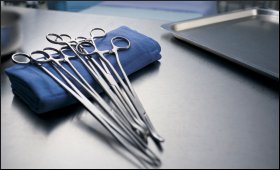|
|
|

|
Medical equipment industry to touch US$ 7 billion by 2012: Study
|
|

|
|
| Top Stories |
 |
|
|
|
SME Times News Bureau | 23 Mar, 2010
The size of Indian medical equipment supplies industry is likely to touch US$ 7 billion by 2012 since a large of public and private healthcare facilities would come up by then in different locations, especially in metros and other emerging satellite towns with concentration for economic activities, according to the Associated Chambers of Commerce and Industry of India (ASSOCHAM).
In it's new study on healthcare services, the ASSOCHAM has stated that current domestic medical equipment suppliers size is estimated around close to US$ 3 billion.
The projections are based on the fact that medical equipment supplies have already started stretching their plans since a substantial number of healthcare facilities are likely to be added in metros and more so in satellite town adjoining to metros since such townships are being promoted for industrial development.
Most of such facilities are estimated to come up through public private initiatives in which leading healthcare facilities are likely to forge alliances with state owned healthcare facilities. In view of this, naturally medical equipment suppliers would have to play a pivotal role to meet the requirement to set up world class laboratories and other centres in such utilities, said D S Rawat, Secretary General ASSOCHAM
The ASSOCHAM study points out that even players belonging to private equity segment have started exploring ways for investing in such healthcare facilities. According latest estimates, private equity investments in healthcare facilities both in hospitals as well as on medical equipment supplier front is found to be close to US$ 50 billion.
The industry is viewed as highly capital intensive, with a long gestation period. Also, Indian PE players view the industry as low on innovation, and thus not justifying the investments needed, according to ASSOCHAM.
Again, the study points out, medical equipment requirements are based on the type of service offered by the healthcare provider, and in most cases the Indian providers focus on the minimum requirements for cost as well as number. This makes it difficult for a new entrant to garner enough market share, making the return on investment unattractive to investors.
Most of the equipment in the Indian market is imported, especially from the USA. However, in the past few years there has been a mushrooming of Indian players who cater to the demands of the quality conscious private hospitals as well as the cost conscious public government hospitals, the paper states.
The industry body stated in its study that although some of the Indian companies have established a lead in the industry and they manufacture niche products with international accreditation, they are mostly export oriented rather than supplying their produce to domestic market.
As the Indian market is maturing, however, these companies will now increase their focus on Indian market, keeping in mind the regulatory requirements and the cost dynamics, the study says.
|
|
|
| |
|
|
|
|
|
|
|
|
|
|
|
|
|
|
| |
| Customs Exchange Rates |
| Currency |
Import |
Export |
US Dollar
|
84.35
|
82.60 |
UK Pound
|
106.35
|
102.90 |
Euro
|
92.50
|
89.35 |
| Japanese
Yen |
55.05 |
53.40 |
| As on 12 Oct, 2024 |
|
|
| Daily Poll |
 |
 |
| Do you think Indian businesses will be negatively affected by Trump's America First Policy? |
|
|
|
|
|
| Commented Stories |
 |
|
|
|
|
|
| |
|